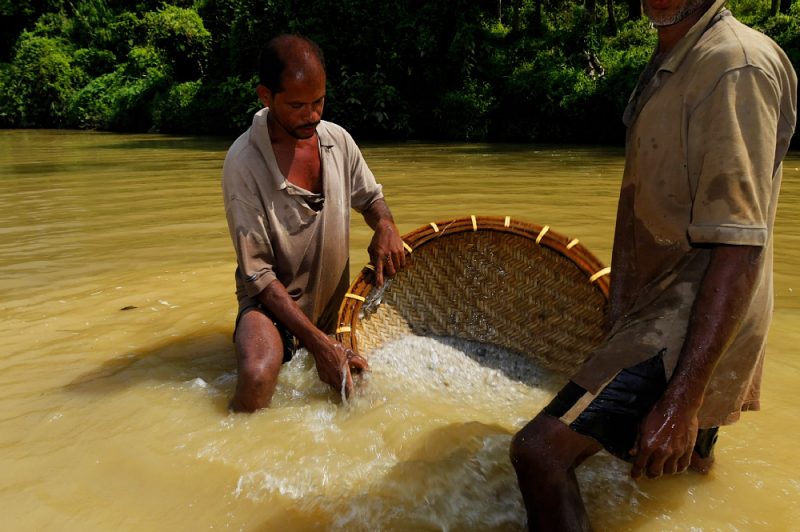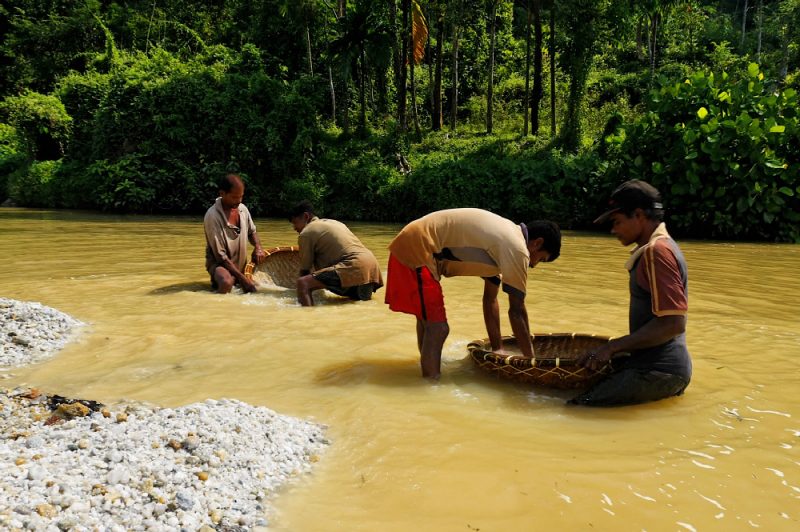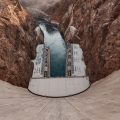Gem mining on the river – Sri Lanka

Gem mining is a large business in Sri Lanka and in alluvial plains in general. See how it looks like.
Sri Lanka is an old piece of the Earth, with a variety of minerals and gems among them. The geological forces, chemistry, heat, and pressure had enough time for gem crystals to grow. Subsequent weathering the rocks through the water and other elements wrestled them from the bedrock. Sri Lanka’s gems are largely found in alluvial deposits in the Highland belt, made up of gravels that have washed down from the mountains and been deposited in the floodplains of rivers and lakes.
Nearly all the gem formations in Sri Lanka are located in the central high-grade metamorphic terrain of the Highland Complex. They were discovered a long time ago. Sri Lanka was affectionately known as Ratna-Dweepa which means Gem Island. The name is a reflection of its natural wealth. Even Marco Polo wrote that the island had the best sapphires, topazes, amethysts, and other gems in the world. Today, Sri Lanka has a rich tradition and remains vitally important to the modern gemstone market. Sri Lanka has a true mine-to-market industry, both domestically and for export.
After some refreshing drinks, we headed toward the river. The scene was not so tidy now, but I guess you can stay clean and tidy when you work in a mine. The mud was a dominant element here. We stood on a river bank, watching the workers. Some of them were in the shallow, very muddy pits.
In the first stage, the miners in the pit remove the non-gem bearing material, often soil, sand, and gravel, chop out the wet clay and illama with a mattock, pile them in small wicker baskets, and toss them up in relays to the surface. This material is taken out of the pit, sorted, and stored to be used later to fill the hole. The process of removing and collecting the soil, sand, and gravel is done in two ways. If the pit is shallow, the miners stand at different heights in the pit. The men above empty the baskets and drop them back in one motion, with the practised rhythm and jugglers. The soil and other materials are passed from hand to hand and are deposited beside the pit.
Illama now needs to be washed, and the process ends in the river here. We waded through the creamy-coloured river to workers panning and sifting the gravel, looking for the precious stones.
Miner put a few handfuls of illama in a shallow circular wicker basket. The basket is then immersed in water and turned several times to remove any mud, gravel, and sand. This enables the light, ordinary pebbles and sediment to escape, leaving the heavier pebbles behind.
Finally, after a basket of illama has been thoroughly washed, its contents, called nambuva, are examined for gem minerals. The basket is tilted at an angle, allowing sunlight to fall on the contents.
The heat was too much for us in less than half an hour, and those workers’ bare skin must be baked. But they have a dark tan and are used to the scorching sun. Most of them wear wide straw hats and are, after all, in the water. I hope they have a good wage.

During our short stay, we didn’t see any gems. I can’t tell what the effect of mining on rivers in Sri Lanka is. What I saw here should be a local disturbance.
This is the end of our small trip.



